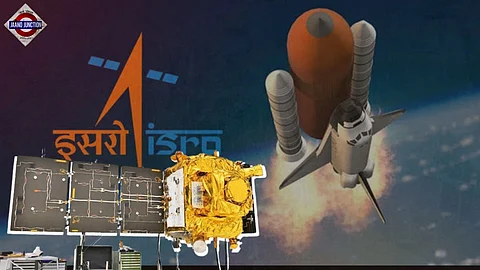

Having conquered the Moon in 2023, the Indian Space Research Organisation (Isro) ushered in 2024 with a thunderous launch of the Polar Satellite Launch Vehicle (PSLV) on its 60th flight carrying the XPoSat mission to space.
The PSLV-C58 mission lifted off from the Satish Dhawan Space Centre in Sriharikota at 9:10 am IST as the world welcomed 2024.
The launch vehicle, India's most successful booster, delivered yet again, sending the satellite into its intended orbit around Earth to begin looking at some of the most enigmatic phenomena in the universe, including black holes.
The head of Isro, S Somanath, declared the mission's launch as a "successful" achievement. Wishing a happy new year to India, Somnath said, "The orbit has been accomplished. We have an exciting time ahead."
WHAT IS ISRO'S XPOSAT MISSION?
The X-ray Polarimeter Satellite (XPoSat) is India's maiden venture into the world of polarimetry to study various dynamics of bright astronomical X-ray sources in extreme conditions. Polarimetry refers to the measurement and analysis of the polarisation of X-rays emitted by celestial objects in the universe.
In the study of bright astronomical X-ray sources, such as neutron stars, black holes, or other high-energy phenomena, polarimetry helps scientists gather additional insights beyond what traditional imaging or spectroscopy can provide. By measuring the polarisation of X-rays, researchers can learn more about the magnetic fields, geometry, and emission mechanisms associated with these energetic objects.
Isro is the second space agency after Nasa to have a dedicated spacecraft studying this feature of black holes. The polarimetry mission aims to analyse how the X-rays from celestial sources are polarised, which can reveal details about the structure and conditions of the objects emitting those X-rays.
"The launch of XPoSat is a clear signal from Isro that India is ready to embark on purely scientific missions that delve into the unknown. This mission provides an expansive platform for academia to significantly contribute to the nation's space exploration endeavours, enhancing research and development," said Manish Purohit, former Isro scientist and a solar energy and spacecraft solar panel expert.
The mission aims to study the structure and geometry of the magnetic field of neutron stars, develop an understanding of galactic black hole binary sources, and study and confirm about the production of X-Rays.
WHAT DID ISRO LAUNCH?
POLIX, the primary payload developed by the Raman Research Institute in collaboration with the U R Rao Satellite Centre, will measure the degree and angle of polarisation in the medium X-ray energy range. This payload is expected to observe around 40 bright astronomical sources during its planned 5-year mission lifespan.
The XSPECT payload will offer fast timing and high spectroscopic resolution in soft X-rays. XSPECT's mission includes long-term monitoring of spectral state changes and simultaneous monitoring of soft X-ray emissions.
ISRO SCRIPTING POEM IN SPACE
Isro will restart the fourth stage of PSLV-C58 twice to lower its orbit from 650 km to 350 km for the PSLV Orbital Experimental Module (POEM) to begin functioning.
The payloads have been developed by several private companies, including Dhruva Space, Bellatrix, K J Somaiya Institute of Technology, K J Somaiya Institute of Technology for Women.
The roaring start to 2024 shows that the Indian space agency is moving at full steam in 2024 with several big projects lined up, including the Gaganyaan mission and the joint mission with Nasa dubbed Nisar.
